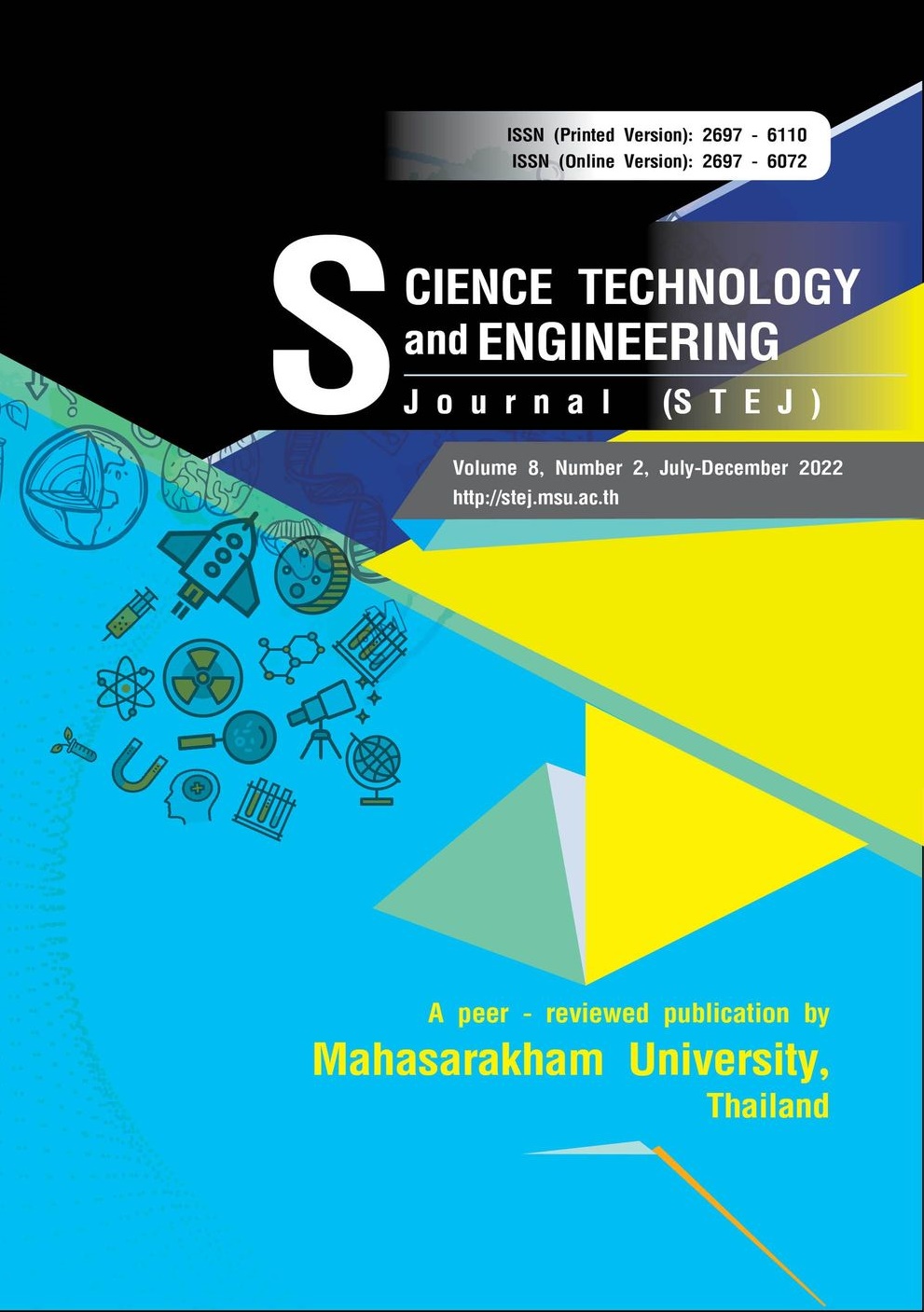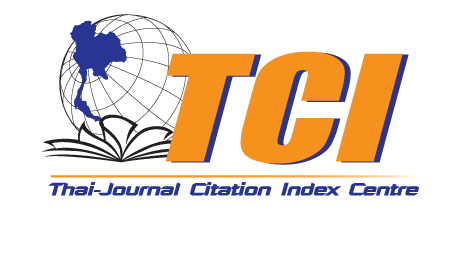Assessment of 226Ra levels and the lifetime cancer fatality risk from drinking water in Muang District, Maha Sarakham province
Keywords:
226Ra, The lifetime cancer fatality risk, HPGeAbstract
226Ra is radioactive and decayed from uranium, which is found naturally in soil and rock, and can get into water consumption supplies. Exposure to the radium in high doses, which is much higher than the levels seen in drinking water can be inducing cancer. In this study, A total of 69 drinking water samples were collected from Muang District, Maha Sarakham Province, and were measured 226Ra in water samples via Mn-fiber using gamma spectrometry (HPGe detector). The results showed that 226Ra concentrations ranged from 0 to 0.097 Bq/l and an average value of 0.025±0.003 Bq/l. All measured 226Ra concentrations are well below the allowed maximum level recommended by the WHO is 1 Bq/l. Lifetime cancer risk, as a result of ingestion of 226Ra by people from the study areas shows that an average of 3.81 out of 1,000,000 may go through some of the fatality cancer development, and 0.53 out of 1,000,000 may go through some of the hereditary effects.
References
Abbasi, A. & Mirekhtiary, F. (2019). Lifetime risk assessment of Radium-226 in drinking water samples. Int. J. Radiat. Res., 17(1), 163-169.
Atyotha, V., Thopan, P., Fungdet, S. & Somtua, J. (2022). Radon exhalation rates of soil samples from Khon Kaen Province, Thailand. Mindanao Journal of Science and Technology, 20(Special Issue 1), 223-235.
Atyotha, V. (2016). Measurement and analysis of radium 226 in drinking water at Amphoe Muang Khon Kaen via manganese fibers using gamma-spectrometry. KKU Engineering Journal, 43(2),210-212.
Duong, V.H., Nguyen, T.H., Hegedus, M., Kocsis, E. and Kovacs, T. (2021). Study of well waters from highlevel natural radiation areas in Northern Vietnam. Int. J. Environ. Res. Public Health, 18, 469, 1-9.
El-Gamal, H., Sefelnasr, A. & Salaheldin, G. (2019). Determination of natural radionuclides for water resources on the west bank of the Nile River, Assiut Governorate, Egypt. Water, 11(2), 311.
El-Zayat, M.H., Mehanni, A.E.& El-Zohary, M. (2022). Assessment of radioactivity levels and annual dose intake from water consumption in Sohag Governorate, Egypt. Arab J. Nucl. Sci. Appl. https://doi: 10.21608/ajnsa.2022. 115748.1542
Ezzulddin, S.K. & Mansour, H.H. (2020). Radon and radium activity concentration measurement in drinking water resources in Kurdistan Region, Iraq. Journal of Radioanalytical and Nuclear Chemistry, 324, 963-976.
Hashim, A.K., Al Safaay, B.R., and Fulyful, F.K. (2014). Study of radon and radium concentration in water samples in some regions of Lebanon. Journal of Kerbala University, 12(2), 209-215.
Kappke, J., Paschuk1, S.A., Rocha, Z., Corrêa1, J.N., Denyak, V., Santos, T. O. & Reque, M. (2016). Radium activity measurements in bottled mineral water. International Nuclear Atlantic Conference-INAC 2011 Belo Horizonte, MG. Brazil.
Mahmoud, M. & El-Zohry, M. (2020). The Natural Background Activity Concentration of (226Ra, 232Th and 40K) and the Annual Effective Dose from Different Water Sources Consumption in Phosphate Polluted Area. Egyptian Journal of Physics, 48(1), 19-26.
Ononugbo, C.P. & Nwaka, B.U. (2017). Natural radioactivity and radiological risk estimation of drinking water from Okposi and Uburu salt lake area, Ebonyi state, Nigeria. Physical Science International Journal, 1-15.
WHO. (2017). Guidelines for Drinking-Water Quality. WHO Library Cataloguing in Publication Data; World Health Organization.
Yamada, R., Hosoda, M., Tabe, T., Tamakuma, Y., Suzuki, T., Kelleher, K., Tsujiguchi, T., Tateyama Y., Djatnika, E.D, Nugraha., Okano, A., Narumi, Y., Kranrod, C., Tazoe, H., Iwaoka, K., Yasuoka, Y., Akata, N., Sanada, T. & Tokonami, S. (2022). 222Rn and 226Ra Concentrations in Spring Water and Their Dose Assessment Due to Ingestion Intake. Int. J. Environ. Res. Public Health , 19, 1-11.
Downloads
Published
How to Cite
Issue
Section
License
Copyright (c) 2022 Science Technology and Engineering Journal (STEJ)

This work is licensed under a Creative Commons Attribution-NoDerivatives 4.0 International License.







